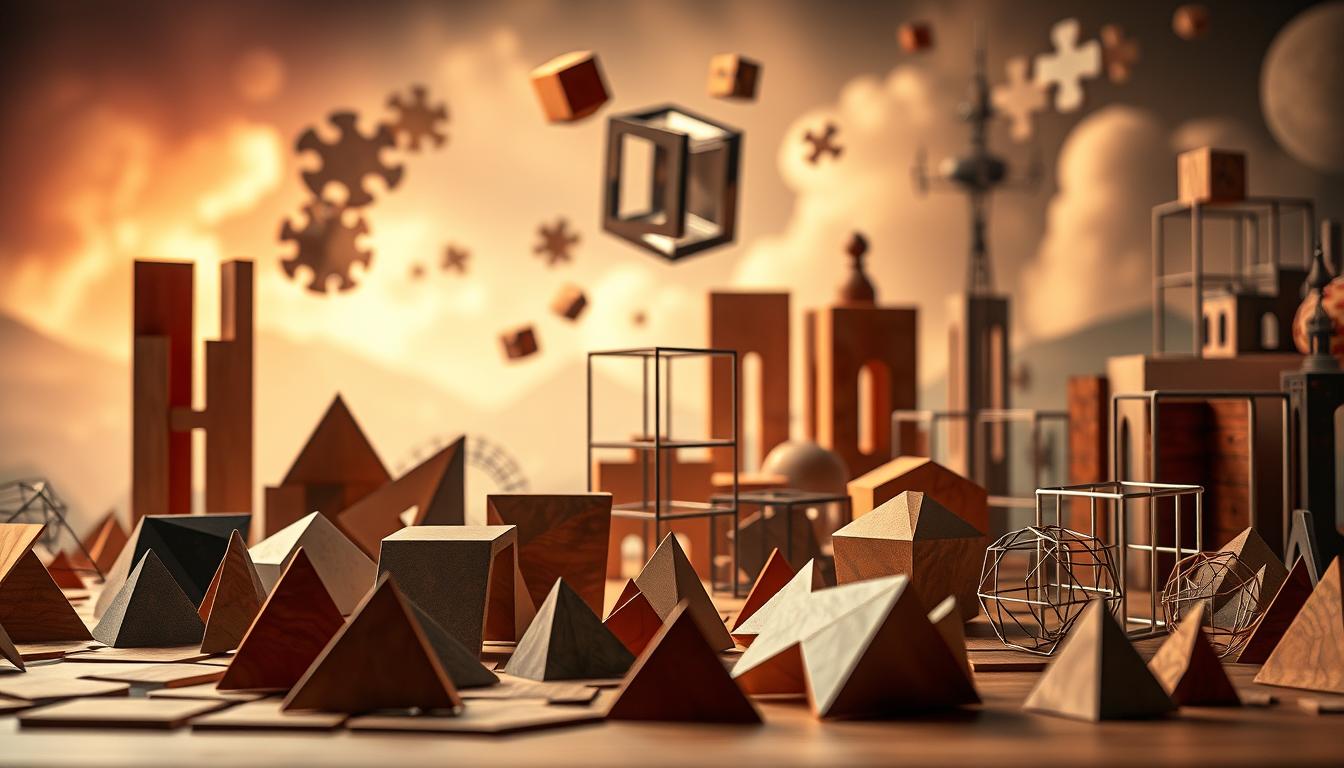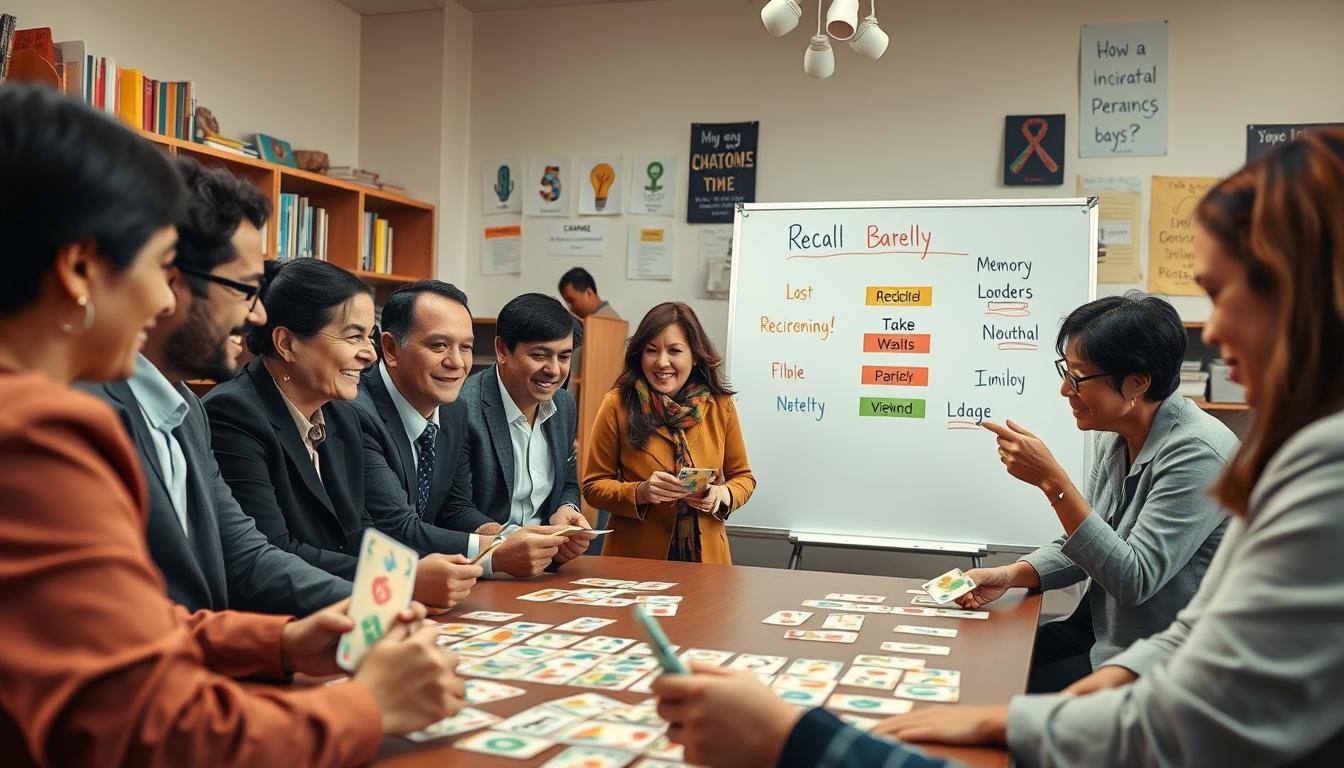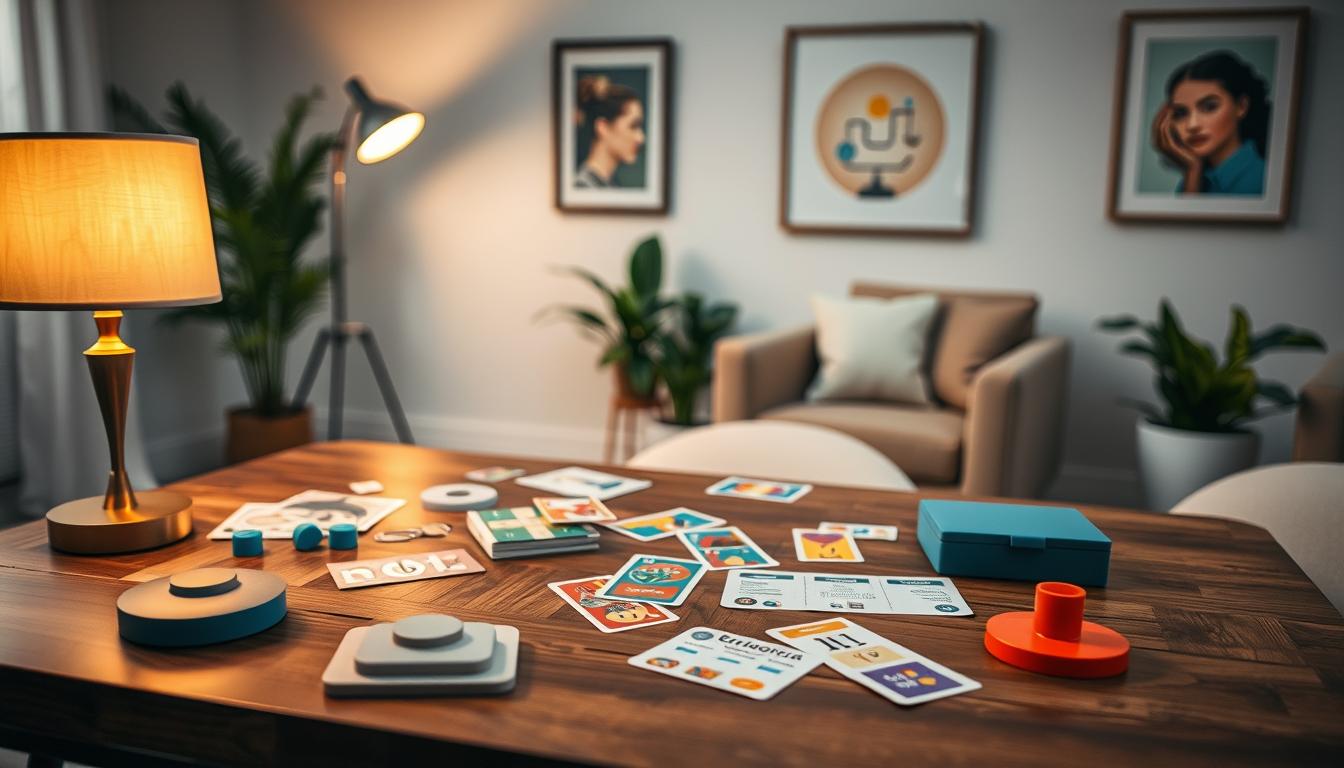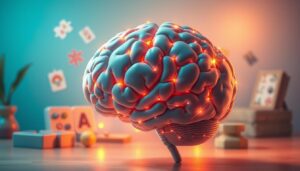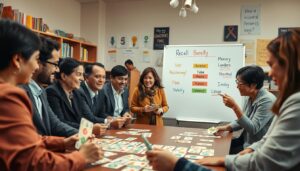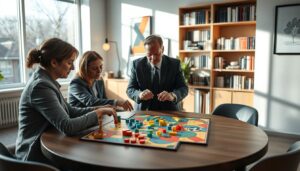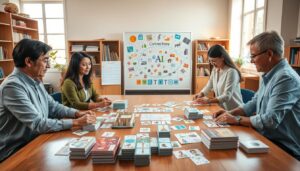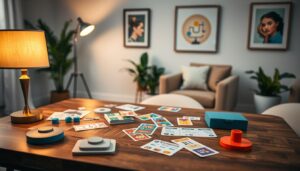Educational games that challenge spatial logic with visual puzzles
Ever thought about how simple games can boost a child’s problem-solving skills? Games that focus on spatial logic and visual puzzles are great for improving cognitive abilities. They keep kids engaged with fun challenges.
These brain games help kids understand spatial relationships and solve problems. As they tackle different levels, they get better at thinking quickly and creatively. Learning becomes both fun and effective.
Introduction to Spatial Logic and Visual Puzzles
Spatial logic helps people see and move around three-dimensional objects. It shows how things fit together in space. Visual puzzles make learning this skill fun by offering challenges with shapes and space.
Introducing visual puzzles in school boosts learning. They make kids think creatively and solve problems. This way, they get better at understanding and using information.
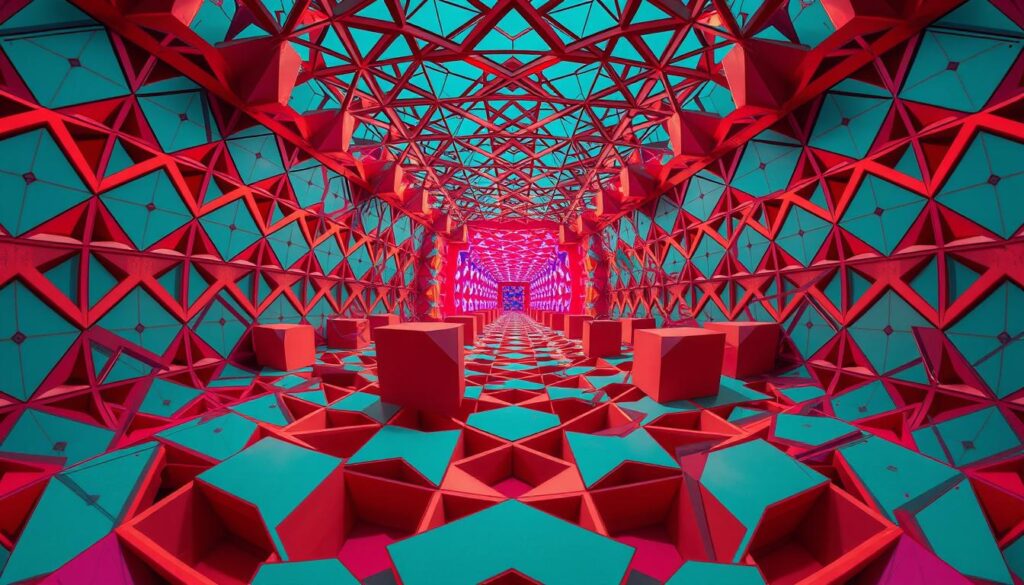
Working on visual puzzles also teaches kids to work together. They learn to solve problems as a team. This helps them grow socially and intellectually.
The Importance of Spatial Reasoning in Education
Spatial reasoning is key in education, especially in math and science. It helps kids see and move objects, improving their grasp of space. This skill makes students better at solving problems with logic.
Studies show that spatial reasoning boosts cognitive growth. Kids who practice these skills do well in geometry and solving problems. Adding spatial reasoning activities to school helps students understand important concepts better.
Games that focus on spatial reasoning are great for learning. They make learning fun and creative. As kids tackle different challenges, they get smarter and more confident in solving problems.
Benefits of Playing Educational Games
Playing educational games offers many benefits for young learners. These games help improve critical thinking and creativity. They also boost problem solving skills.
Children stay engaged in these games more than in traditional learning. This is because they find learning fun and exciting.
Studies show that educational games make learning more enjoyable. They help children focus better and remember more. As kids play, they enjoy learning, which boosts their academic performance.
Engaging Children with Visual Puzzles
Visual puzzles are great for kids to learn and grow. They help kids match colors, shapes, and patterns. This makes them better at solving problems.
As kids solve puzzles, they learn to focus and be patient. These puzzles keep kids interested and build their confidence. Every puzzle they solve makes them want to try even harder challenges.
Teachers and parents can use these puzzles to make learning fun. They help kids enjoy learning and grow at the same time.
| Type of Visual Puzzle | Skill Developed | Age Range |
|---|---|---|
| Jigsaw Puzzles | Spatial Reasoning | 3-10 years |
| Pattern Recognition Games | Attention to Detail | 4-12 years |
| Color Matching Activities | Visual Discrimination | 2-6 years |
| Shape Sorting Toys | Cognitive Flexibility | 1-5 years |
Top Educational Games that Challenge Spatial Logic
Many top educational games focus on enhancing spatial logic through engaging puzzle games. These games are not just fun but also help a lot with kids’ brain development. They teach kids to solve problems and think critically by using their eyes to manipulate shapes.
Overview of Popular Options
Games like Tangrams, Swish, and Q-Bitz are very effective. Each game has its own puzzles that make kids think differently about shapes. Playing these games helps kids be more creative and improve their spatial logic skills.
How These Games Foster Cognitive Development
Playing these puzzle games helps kids get better at understanding space and shapes. They learn to think on their feet, feel more confident, and get better at seeing things spatially. This not only helps them do well in school but also prepares them for solving problems in real life.
| Game | Type | Skills Developed |
|---|---|---|
| Tangrams | Shape Manipulation | Visual-spatial skills, Critical thinking |
| Swish | Pattern Recognition | Quick-thinking, Spatial reasoning |
| Q-Bitz | Visual Arrangement | Memory, Visual perception |
Brain games with maze-style spatial reasoning
Playing brain games with maze-style challenges can really help kids improve their thinking skills. These games ask players to find their way through complex paths. This helps them learn how to plan and reach their goals efficiently.
As kids play these games, they get better at spotting patterns and understanding how things relate. They start to think critically and make smart choices based on what they see. This makes them quicker to adapt and solve problems.
Adding these games to school can make learning fun and help kids develop important thinking skills. Parents and teachers should try maze-style puzzles to help kids grow. Here are some top maze-style brain games:
| Game Name | Age Group | Skills Developed |
|---|---|---|
| Rush Hour | 8+ | Problem-solving, planning |
| Gravity Maze | 8+ | Spatial reasoning, logic |
| Maze Quest | 5+ | Decision-making, strategy |
Tangrams: The Classic Spatial Puzzle
Tangrams are a timeless challenge in spatial puzzles. These flat pieces, shaped like geometric figures, have fascinated people for generations. Players arrange the seven pieces into various forms, sparking creativity and critical thinking.
This classic puzzle not only entertains but also helps improve spatial reasoning abilities.
How Tangrams Enhance Problem-Solving Skills
Playing with Tangrams boosts problem-solving skills. It makes children think logically and systematically as they try to fit pieces together. This process helps them develop resilience and the ability to analyze different outcomes.
Through trial and error, players gain a deeper understanding of geometry and shape manipulation.
- Improved spatial reasoning through hands-on experience.
- Development of critical thinking as children strategize their moves.
- Enhanced dexterity as players manipulate pieces into place.
Tangrams are versatile and can be used in both educational settings and at home. They are great for solo play or group challenges. This makes them perfect for different learning environments.
Playing Tangrams fosters collaboration among peers. It enhances problem-solving skills through shared experiences and strategy discussions.
Q-Bitz: A Game of Visual Manipulation
Q-Bitz is an exciting game that challenges players through visual manipulation. Players try to recreate complex patterns with colorful cubes. They must think carefully about how to align and place the cubes to match the designs.
This game not only sparks creativity but also improves cognitive skills. It enhances spatial reasoning and visual memory. As players get better, they can solve more complex challenges. This makes Q-Bitz a great way to help young minds grow in a fun setting.
Swish: A Fast-Paced Challenge for Kids
Swish is a fun and educational game that kids love. Players try to place cards with colored balls over hoops. They must make quick decisions to succeed.
The game helps kids improve their spatial reasoning. They learn to think fast and visualize movements. This keeps them focused and sharpens their minds.
Strategies for Success in Swish
To win at Swish, kids can use a few key strategies:
- Focus on spatial awareness: Knowing how cards fit together is key.
- Practice quick decision-making: Fast thinking can give you an edge.
- Visualize outcomes: Think ahead to predict possible moves.
- Communicate with teammates: Working together can reveal new strategies.
Using these strategies, kids not only have fun but also learn a lot. Swish is great for schools because it’s both fun and educational. It challenges kids to think fast and work together, making learning exciting.
Game Variations to Support Different Learning Styles
Children learn in many ways, making game variations key to reaching all learners. Adaptable play helps tailor educational games to fit different learning styles. This way, teachers can make games that engage students in various ways.
Game variations boost cognitive development by appealing to different learning types. For instance, a spatial puzzle can be a digital game or a board game. This gives learners more ways to interact with the material. The aim is to create a space where students can succeed.
| Learning Style | Game Variation | Example Educational Game |
|---|---|---|
| Visual Learners | Interactive Digital Games | Q-Bitz |
| Auditory Learners | Group Discussions with Games | Swish |
| Kinesthetic Learners | Tactile Puzzle Activities | Tangrams |
Using these game variations in class changes the learning scene. Students connect educational games to their own learning styles. This helps them understand and remember concepts better. It makes learning fun and accessible for all.
Incorporating Building Blocks and Legos
Building blocks and Legos are key for kids’ creativity and spatial skills. They make learning fun and help kids build and take apart things. This way, they learn to see shapes and how they fit together.
Why Building Blocks Are Essential for Learning
Playing with blocks and Legos boosts kids’ thinking skills. They try new things and solve problems. This makes them think creatively and understand space better.
Playing with blocks gets kids ready for school. They learn about math and science in a fun way. It’s hands-on learning that makes learning fun and prepares them for more.
Utilizing Puzzles for Cognitive Engagement
Puzzles are great for kids’ brains. They help improve logical thinking and problem-solving skills. Kids learn to focus and keep trying, which helps them do well in school.
Teachers can use puzzles to make learning fun and team-based. Puzzles help kids work together, promoting teamwork and healthy competition. This way, learning becomes fun and helps kids grow mentally.
Teachers can pick puzzles that fit different ages and skills. This keeps the classroom lively and interesting. Puzzles help kids think creatively and prepare them for solving problems later on.
Conclusion
Using educational games with spatial logic and visual puzzles is key for kids’ brain growth. These games boost problem-solving skills and spark creativity and critical thinking. They help kids learn to think spatially, which is vital for doing well in school.
Teachers and parents are seeing how important these games are. They want to add more of them to school lessons. This way, kids get ready to face future school challenges with confidence.
By focusing on spatial reasoning and visual puzzles, we help kids get ready for the world ahead. Brain games today mean a smarter, more capable future for them.
FAQ
What are educational games that focus on spatial logic?
Educational games that focus on spatial logic make players think deeply about space and solving problems. They use fun activities like visual puzzles and mazes. These games help kids improve their thinking skills.
How do visual puzzles benefit children?
Visual puzzles help kids think about shapes and patterns. They improve focus, patience, and problem-solving. These puzzles also boost creativity and logical thinking.
Why is spatial reasoning important in education?
Spatial reasoning is key in math and engineering. It helps kids understand space and develop logical thinking. Games that improve these skills can help kids do better in school.
Can educational games improve academic performance?
Yes, educational games can make kids think better, be more creative, and solve problems. They help kids focus and remember things better. These games make learning fun and can lead to better grades.
What types of games specifically develop spatial logic skills?
Games like Tangrams, Q-Bitz, and Swish are great for spatial logic. They make players think visually and make quick decisions. These games improve spatial reasoning and problem-solving.
How do building blocks and Legos support learning?
Building blocks and Legos help kids think creatively and understand math better. They let kids build and experiment with shapes. This helps kids learn and design in a fun way.
What role do puzzles play in cognitive engagement?
Puzzles are great for learning because they make kids think logically and concentrate. They create a fun learning environment. This helps kids learn more and work better together.
